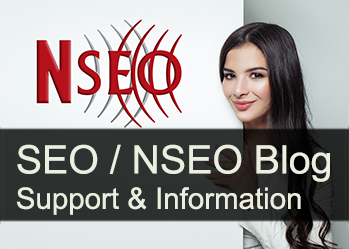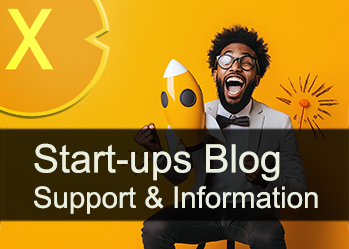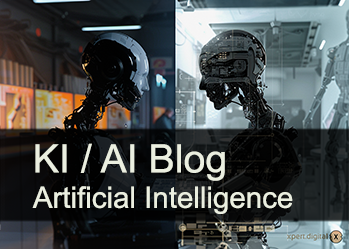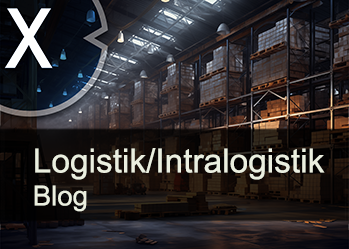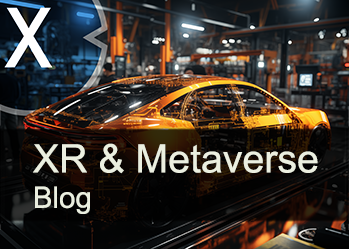Top ranking on Google? The AI doesn't care – what matters now for your visibility
Xpert pre-release
Language selection 📢
Published on: October 8, 2025 / Updated on: October 8, 2025 – Author: Konrad Wolfenstein

Top ranking on Google? The AI doesn't care – what matters now for your visibility – Image: Xpert.Digital
Forget SEO? Why everyone's talking about GEO now and how to optimize for AI search
### Google's new AI search is pure chaos: Only 9% of results are consistent – what that means for you ### Google's AI revolution: Why AI answers have little to do with the top search results ###
Google's AI future has two faces: Do you know the crucial difference between AI Mode and Overviews?
The way we search for information is currently undergoing its biggest revolution since the advent of Google itself. With the introduction of AI-powered features like AI Overviews and the new, experimental AI Mode, Google is setting the course for a future in which artificial intelligence no longer merely assists, but dominates search. But a deeper analysis of these new systems reveals a reality that may surprise many: a world full of unpredictable volatility, fundamental differences from traditional organic search, and surprisingly low consistency.
Imagine: Even for identical search queries, AI Mode delivers over 90% different sources. A top-10 ranking in organic search, the goal of all SEO efforts for years? It's often barely relevant to the AI responses, as the overlap is a meager 14 percent. Even the two AI systems, AI Mode and AI Overviews, seem to play by completely different rules and rarely draw the same conclusions from the web.
This article dives deep into the data and analyzes the mechanics, source patterns, and radical differences between Google AI Mode, AI Overviews, and traditional search results. We shed light on why traditional SEO tactics are reaching their limits and a new concept is coming to the fore: Generative Engine Optimization (GEO). Prepare for a comprehensive evaluation that reveals what this tectonic shift truly means for marketers, content creators, and the future of online visibility.
ℹ️ This article was created in collaboration between Xpert.Digital (B2B/industry influencer) and SE Ranking (cloud-based all-in-one SEO software – SaaS).
More about it here:
Mastering complex queries: Google's new AI tab in practice — what users can really expect from AI Mode vs. AI Overviews
What is Google AI Mode and how does it differ from AI Overviews?
Google AI Mode is an experimental AI-powered search feature introduced in May 2025 and initially available in the US. Unlike AI Overviews, which appear as AI summaries above organic search results, AI Mode is a separate tab offering a fully AI-powered search experience. AI Mode leverages Google's most advanced language model, Gemini 2.5, and enables complex, multi-part queries with conversational follow-up questions. The system uses a special "query fan-out" technique, which splits a user query into multiple subtopics and simultaneously searches multiple data sources.
How does the technical implementation of AI Mode work?
AI Mode is based on a customized version of Gemini 2.5 Pro and accesses various Google data sources, including the Knowledge Graph, real-time data, CommonCrawl, and shopping data for billions of products. The system uses advanced reasoning, reasoning, and multimodal capabilities to answer complex queries and supports text, voice, and image input. According to Google, the feature already reaches 1.5 billion monthly users and increases search engagement by 10 percent.
Volatility and consistency of results
How volatile are the results in Google AI Mode?
The volatility in AI Mode is exceptionally high. A comprehensive study of 10,000 keywords shows that even identical search queries on the same day often use different sources. The average overlap of exact URLs between three independent tests was only 9.2 percent. This means that AI Mode often selects completely different pages, even when the query remains unchanged. Even more drastic: 21.2 percent of the keywords had no overlapping URLs at all between the three tests, while only 0.1 percent had a 100 percent URL match.
Why is the volatility of AI Mode so high?
The high volatility results from several factors. First, the "query fan-out" technique causes the system to perform hundreds of parallel searches for each query, potentially finding different results. Additionally, AI Mode takes location-specific adjustments into account, even if the query doesn't contain any geographic details. The system attempts to personalize answers based on the user's location, resulting in different sources. The volatility is also evident in comparisons with other AI systems: An analysis of 80,000 prompts from various AI answering engines revealed that Google AI Overviews have the highest volatility, with 59.3 percent of new domains added within a month.
How does domain volatility compare to URL volatility?
While the URL overlap is only 9.2 percent, the situation improves slightly to 14.7 percent when considering domains. This means that while AI Mode can cite different pages from the same website, it still exhibits low consistency. On average, AI Mode cites 5.2 URLs from the same domain, suggesting that the system shows some preference for certain websites when selecting trustworthy sources.
Source pattern and link structure
How many sources does a typical AI Mode response contain?
An average AI Mode response contains 12.6 URLs as sources. Across 9,734 triggered responses, AI Mode used a total of 122,617 links to support its answers. The most common number is 11-15 links per response (35.4 percent), followed by 6-10 links (30 percent) and 16-20 links (18.6 percent). Only 39 responses contained only one link, while no response was completely without references.
How are sources presented in AI Mode answers?
The sources are primarily presented in three different formats. 90.8 percent of all links appear as block links in a separate area to the right of the main text of the answer. 8.9 percent are in-text links, integrated directly into the answer text as traditional hyperlinks. A new category is formed by so-called AIM SERP links, which mimic organic search results and account for only 0.3 percent of all links. These AIM SERP links appear in two variants: a long version with up to 10 links that resemble standard search result blocks, and a short version titled "Quick results from the web" and typically containing two links.
Which websites are cited most frequently in AI Mode?
Google itself is technically the most cited domain with 6,971 links (5.7 percent of all citations). This dominance is consistent across all datasets, fluctuating between 5.5 and 5.7 percent. Interestingly, 97.9 percent of Google links point to Google Maps business profiles, which appear in 9.2 percent of responses. Among external websites, Indeed leads with 1.8 percent of all citations, followed by Wikipedia (1.6 percent), Reddit (1.5 percent), and YouTube (1.4 percent).
Differences between AI Mode and AI Overviews
How much overlap does AI Mode and AI Overviews have?
The overlap between AI Mode and AI Overviews is surprisingly low. At the URL level, the average overlap is only 10.7 percent. 13.8 percent of keywords had no overlapping URLs at all between the two systems, while no keyword had a 100 percent URL match. When looking at domains, the overlap increases slightly to 16 percent. These low values highlight fundamental algorithmic differences in the source selection of the two systems.
Why are AI Mode and AI Overviews so different from each other?
The differences arise from various technical and strategic factors. AI Mode uses Gemini 2.5 Pro with enhanced reasoning capabilities, while AI Overviews is based on an earlier version. AI Mode's query fan-out process results in deeper web exploration than AI Overviews. Additionally, AI Mode appears to consider a broader range of sources and rely less on traditional ranking signals. A study by BrightEdge shows that brands appear in 90 percent of AI Mode responses, while they appear in only 43 percent of AI Overviews responses.
B2B support and SaaS for SEO and GEO (AI search) combined: The all-in-one solution for B2B companies

B2B support and SaaS for SEO and GEO (AI search) combined: The all-in-one solution for B2B companies - Image: Xpert.Digital
AI search changes everything: How this SaaS solution is revolutionizing your B2B rankings forever.
The digital landscape for B2B companies is undergoing rapid change. Driven by artificial intelligence, the rules of online visibility are being rewritten. It has always been a challenge for companies to not only be visible in the digital masses, but also to be relevant to the right decision-makers. Traditional SEO strategies and local presence management (geomarketing) are complex, time-consuming, and often a battle against constantly changing algorithms and intense competition.
But what if there were a solution that not only simplifies this process, but makes it smarter, more predictive, and far more effective? This is where the combination of specialized B2B support with a powerful SaaS (Software as a Service) platform, specifically designed for the needs of SEO and GEO in the age of AI search, comes into play.
This new generation of tools no longer relies solely on manual keyword analysis and backlink strategies. Instead, it leverages artificial intelligence to more precisely understand search intent, automatically optimize local ranking factors, and conduct real-time competitive analysis. The result is a proactive, data-driven strategy that gives B2B companies a decisive advantage: They are not only found, but perceived as the authoritative authority in their niche and location.
Here's the symbiosis of B2B support and AI-powered SaaS technology that is transforming SEO and GEO marketing and how your company can benefit from it to grow sustainably in the digital space.
More about it here:
Google AI Mode breaks SEO rules — what marketers need to do now
Comparison with organic search results
How much do AI Mode results overlap with the organic top 10?
The overlap between AI Mode and the organic top 10 results is minimal. The average URL overlap is only 14 percent, which equates to approximately 2.5 identical URLs per query. 82.1 percent of the analyzed keywords showed at least some overlap, while 17.9 percent showed no match at all. Only three keywords had a full match. This means that AI Mode rarely references the pages that Google ranks highest in traditional search.
Does the overlap improve when looking at the top 20 organic results?
Paradoxically, the overlap even worsens when looking at the top 20 organic results. The average URL overlap drops to 12 percent. This shows that AI Mode rarely uses pages ranked 11th to 20th in organic search, instead favoring sources outside the traditional ranking structure. Domain overlap is 18.6 percent, with an average of 4.1 shared domains per query.
What do these small overlaps mean for SEO strategies?
The minimal overlap makes it clear that AI Mode and traditional Google search apply completely different criteria for relevance and authority. A page that ranks organically in the top 10 won't automatically appear in an AI Mode response. AI Mode follows its own rules, which differ from traditional SEO signals. This requires new optimization strategies that go beyond traditional SEO methods and focus on Generative Engine Optimization (GEO).
Impact on visibility and user behavior
How does AI Mode influence users’ clicking behavior?
Studies show dramatic effects on click behavior. On search results pages with AI Overviews, the click-through rate on organic results is only 8 percent, compared to 15 percent for traditional SERPs without AI elements. Only 1 percent of users click directly on one of the linked source texts within the AI Overviews. 26 percent of users end their browsing session immediately after a SERP with AI Overview, without further interaction, while this figure is only 16 percent for traditional search results.
What factors influence the occurrence of AI-generated responses?
The likelihood of AI-generated answers increases with the complexity of the query. For searches with more than 10 words, AI Overviews appear in 53 percent of cases. Question words like "what," "who," "when," and "why" trigger AI summaries in 60 percent of cases. Longer search queries are more likely to generate AI Overviews, while for searches with just two words, an AI summary is only displayed in 8 percent of cases.
Tracking and monitoring AI visibility
What tools are available for tracking AI visibility?
Various specialized tools have been developed for monitoring AI visibility. SE Ranking offers a comprehensive AI Search Toolkit that covers AI Overviews, ChatGPT, and soon also AI Mode. The toolkit shows which keywords trigger AI Overviews, whether your website appears, and how visibility changes over time. Semrush has also introduced AI SEO tools that analyze brand visibility in Google AI Mode. Surfer offers an AI Tracker that tracks brand mentions across various AI models.
Which metrics are crucial for AI monitoring?
The most important metrics for AI monitoring include share of voice (proportion of brand presence compared to competitors), mentions (frequency of brand mentions), average position (average ranking position in AI responses), and citation rate (frequency of links). Additionally, geographic and language breakdowns are important, as visibility varies by region and language. Content gap analysis helps identify areas where competitors are mentioned but your own brand isn't.
Strategies for Generative Engine Optimization (GEO)
What is Generative Engine Optimization and why is it important?
Generative Engine Optimization (GEO) is the practice of optimizing content and brand presence for AI-driven search engines such as Google AI Mode, ChatGPT, and Perplexity. Unlike traditional SEO, which focuses on search rankings, GEO aims to ensure brands appear in AI-generated answers and become part of the conversation. GEO encompasses publishing content in the right places, collecting positive brand mentions, and ensuring technical accessibility for AI crawlers.
Which specific GEO strategies lead to success?
Successful GEO strategies build on solid SEO fundamentals but go beyond them. Websites must be crawlable, indexable, fast, and mobile-friendly. EEAT (Experience, Expertise, Authoritativeness, Trustworthiness) is crucial, as AI systems favor trustworthy sources. Content should be conversational, provide direct answers, and focus on long-tail keywords that reflect search intent-based queries. Structured data, citations from credible sources, and consistent brand information across different platforms are also important.
Future prospects and challenges
How will AI search evolve?
Google plans to gradually expand AI Mode to more countries, having already made it available in English in 180 countries. Integration is expected to become deeper, with features such as agentic search, which enables autonomous purchases and reservations. Deep Search, an advanced research feature, crawls hundreds of websites and generates comprehensive, fully cited reports in minutes. These developments indicate that traditional search engines could increasingly be replaced by conversational AI assistants.
What challenges arise for content creators and marketers?
The high volatility of AI systems makes it difficult to ensure consistent visibility. Content strategies must evolve from pure keyword targeting to comprehensive topic coverage and authority. The limited overlap between AI mode and organic results means that successful SEO strategies don't automatically lead to AI visibility. Brands must develop new metrics and continuously monitor to understand and optimize their presence in AI responses.
Recommendations for action
What are the most important findings for practice?
Research clearly shows that AI Fashion represents a completely new paradigm that requires its own rules and strategies. The extremely high volatility (only 9.2 percent URL overlap in repeated tests) makes long-term planning difficult, but requires continuous monitoring. The minimal overlap with organic search results (14 percent) means that traditional SEO successes do not automatically lead to AI visibility. Companies must expand their content strategies and focus on trustworthiness, authority, and structured information.
What practical steps should companies take?
Companies should first measure their current visibility in AI systems and implement specialized tracking tools. Content strategies must go beyond keyword optimization and focus on comprehensive thematic coverage, EEAT principles, and structured data. Google's own services, such as Google Maps Business Profiles, should be optimized, as they frequently appear in AI Mode responses. Developing a coherent GEO strategy that considers both current AI systems and future developments will be crucial for long-term success in the changing search landscape.
The transformation of search through AI technologies like Google AI Mode represents a fundamental shift that requires new strategies, tools, and mindsets. Companies that understand these changes early and take appropriate action will be able to secure decisive competitive advantages in the new AI-driven search landscape.
Your global marketing and business development partner
☑️ Our business language is English or German
☑️ NEW: Correspondence in your national language!
I would be happy to serve you and my team as a personal advisor.
You can contact me by filling out the contact form or simply call me on +49 89 89 674 804 (Munich) . My email address is: wolfenstein ∂ xpert.digital
I'm looking forward to our joint project.
☑️ SME support in strategy, consulting, planning and implementation
☑️ Creation or realignment of the digital strategy and digitalization
☑️ Expansion and optimization of international sales processes
☑️ Global & Digital B2B trading platforms
☑️ Pioneer Business Development / Marketing / PR / Trade Fairs
Our global industry and economic expertise in business development, sales and marketing

Our global industry and business expertise in business development, sales and marketing - Image: Xpert.Digital
Industry focus: B2B, digitalization (from AI to XR), mechanical engineering, logistics, renewable energies and industry
More about it here:
A topic hub with insights and expertise:
- Knowledge platform on the global and regional economy, innovation and industry-specific trends
- Collection of analyses, impulses and background information from our focus areas
- A place for expertise and information on current developments in business and technology
- Topic hub for companies that want to learn about markets, digitalization and industry innovations





